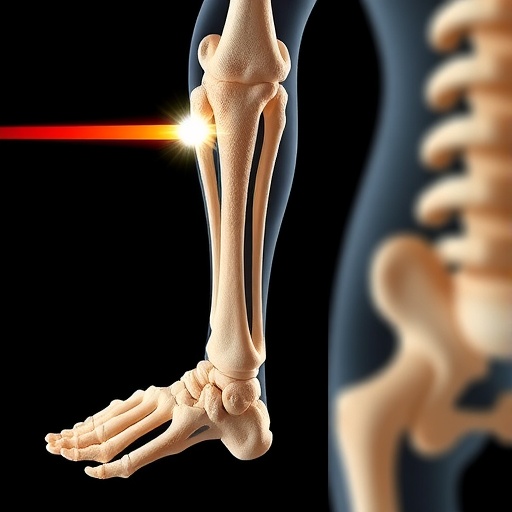
The opioid crisis has cast a long shadow over the landscape of pain management, particularly in high-contact sports like football. However, recent data emerging from the National Football League (NFL) presents a more optimistic picture regarding the prescription of opioid pain medications among elite athletes. An analysis conducted on data from the NFL’s Prescription Drug Monitoring Program for 2021 and 2022 reveals that these athletes were substantially less likely to receive opioid prescriptions compared to not only the general U.S. population but also to their male counterparts of similar age.
The findings are noteworthy: less than 3 percent of the pain medications prescribed to NFL players during the 2021 and 2022 seasons were opioids. Instead, a significant 86 percent of the medications administered were nonsteroidal anti-inflammatory drugs (NSAIDs), such as ibuprofen and naproxen. This trend indicates a shift towards safer, non-opioid alternatives for managing pain often associated with the rigorous physical demands faced by football players. This information is particularly reassuring given the potential risks associated with opioid use, including dependence and overdose.
Dr. Kurt Kroenke, a researcher and clinician affiliated with the Regenstrief Institute and Indiana University School of Medicine, emphasized the significance of these findings from a public health standpoint. He asserts that the data reflects a growing awareness and improvement in pain management protocols, including an emphasis on non-pharmacological treatments. This paradigm shift is crucial not only for the athletes currently in the league but may also have implications for pain management strategies across various sports domains.
The statistics illustrate a positive trend: during the 2022 season, 2,189 players were prescribed a total of 14,880 pain medications, slightly fewer than the prior year, reinforcing the consistent intent to manage pain more effectively without resorting to opioids. Importantly, the data collected through the NFL’s monitoring program from 2021 and 2022 marks the first substantial evidence reflecting the evolution of pain management within professional football, highlighting the effectiveness of the measures taken to limit opioid prescriptions.
Historically, the use of opioids among NFL players had raised concerns. A survey conducted in 2011 indicated that over half of retired NFL players reported having used prescription opioids during their careers, with a significant portion acknowledging misuse. This alarming trend prompted calls for reforms in prescribing practices and a more comprehensive understanding of the implications tied to opioid use in sports. The ensuing changes, guided by the Centers for Disease Control and Prevention (CDC) and other organizations, have focused on reducing the potential for opioid use disorder among athletes.
The establishment of the NFL’s Prescription Drug Monitoring Program in 2019 marked a critical step in tracking prescription medications. This program enables better oversight of medication prescriptions among players, ensuring that the medical staff adheres to guidelines that encourage safer pain management practices. The early results from 2021 and 2022 reflect a commitment not just to the health and safety of current players but also to the broader goal of fostering a culture of responsible medication use within professional sports.
Dr. Kevin Hill, co-author of the study and a prominent figure in addiction psychiatry, reiterated the importance of these findings. He noted that while professional football inherently involves a high risk for injuries and pain, the same principles regarding pain management and opioid usage can extend to other sports such as hockey, basketball, and even collegiate athletics. The emphasis on safe, evidence-based solutions is becoming a hallmark of athletic care across different physical pursuits.
Moreover, initiatives spearheaded by the NFL and the NFLPA’s Joint Pain Management Committee underscore a concerted effort to delve deeper into pain management research, exploring alternative treatments beyond medication. This ongoing investigation into effective pain relief options is crucial, considering the physical toll that high-level sports exert on athletes, and seeks to lay the groundwork for innovative treatments that prioritize health and safety.
As the NFL refines its approach to pain management, discussions surrounding player health and welfare are front and center. Health practitioners involved in sports medicine are now evaluating the effectiveness and safety of various treatment modalities, ensuring that players have access to the best possible care options. The success in curbing opioid usage among athletes serves as a beacon of hope, inspiring other leagues to follow suit in addressing this pressing issue.
In conclusion, the data emerging from the NFL’s Prescription Drug Monitoring Program serves as a testament to the strides being made in pain management within professional sports. The significantly lower rates of opioid prescriptions among NFL players compared to previous years signify not just a change in prescribing habits but potentially a cultural shift in how pain is perceived and treated in high-stakes athletic contexts. As research advances, the broader implications could lead to safer practices across all sports, safeguarding the health of athletes both during their careers and beyond.
The comprehensive approach taken by the NFL is noteworthy, and it is crucial for stakeholders in sports medicine to recognize both the challenges posed by pain management and the opportunities to improve player health outcomes. The ongoing endeavors of various committees and collaborations within the league aim to sustain a positive trajectory in how pain is treated at all levels of competition, which may evolve the landscape of sports medicine for years to come.
In summary, while the challenges of pain and injury in professional sports remain, the commitment to reducing opioid use among athletes through education and improved practices signifies a crucial turning point in athlete care. As the attention on pain management continues, it inspires a collective responsibility to ensure that solutions prioritize the long-term health and safety of all athletes.
Subject of Research: Pain Management in NFL Athletes
Article Title: Pain Medication Data from the 2021 and 2022 National Football League Prescription Drug Monitoring Program
News Publication Date: October 2023
Web References: PubMed
References: Current Sports Medicine Reports
Image Credits: N/A
Keywords: NFL, Pain Management, Opioids, NSAIDs, Athlete Health, Prescription Drug Monitoring, Sports Medicine, Pain, Injury Management.





